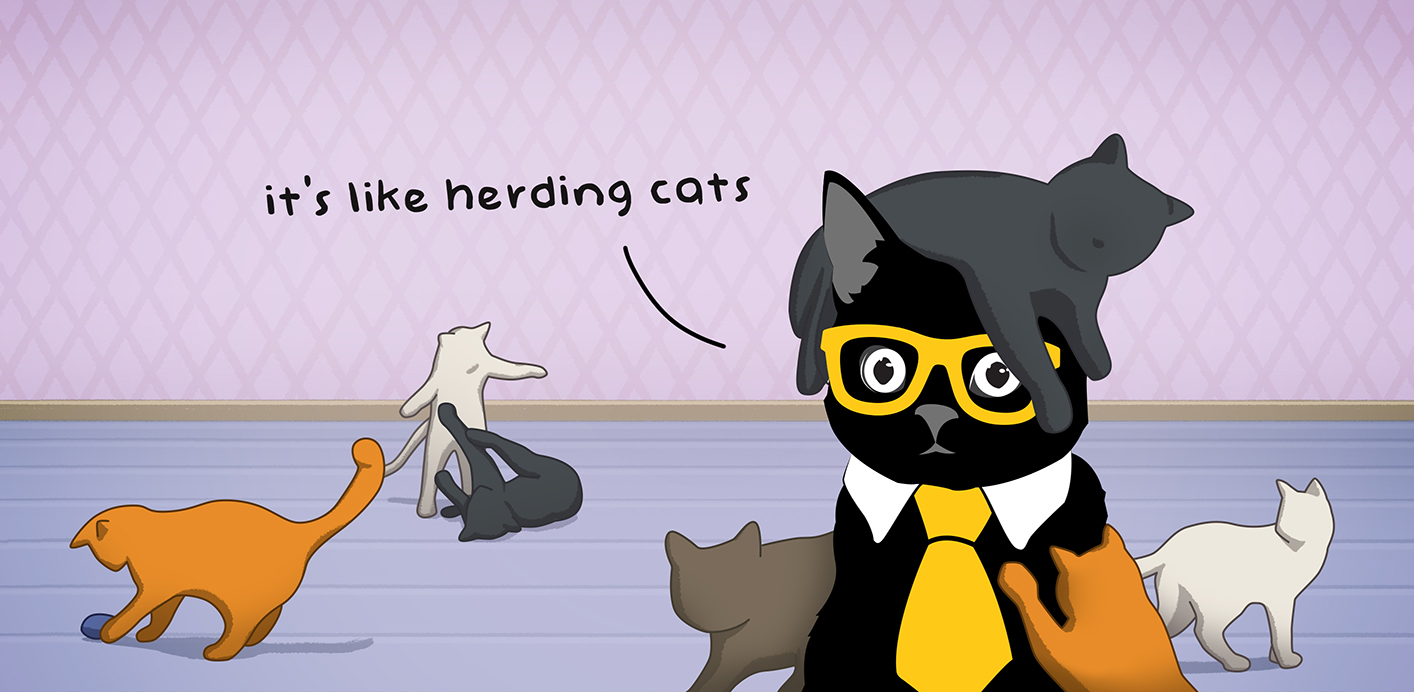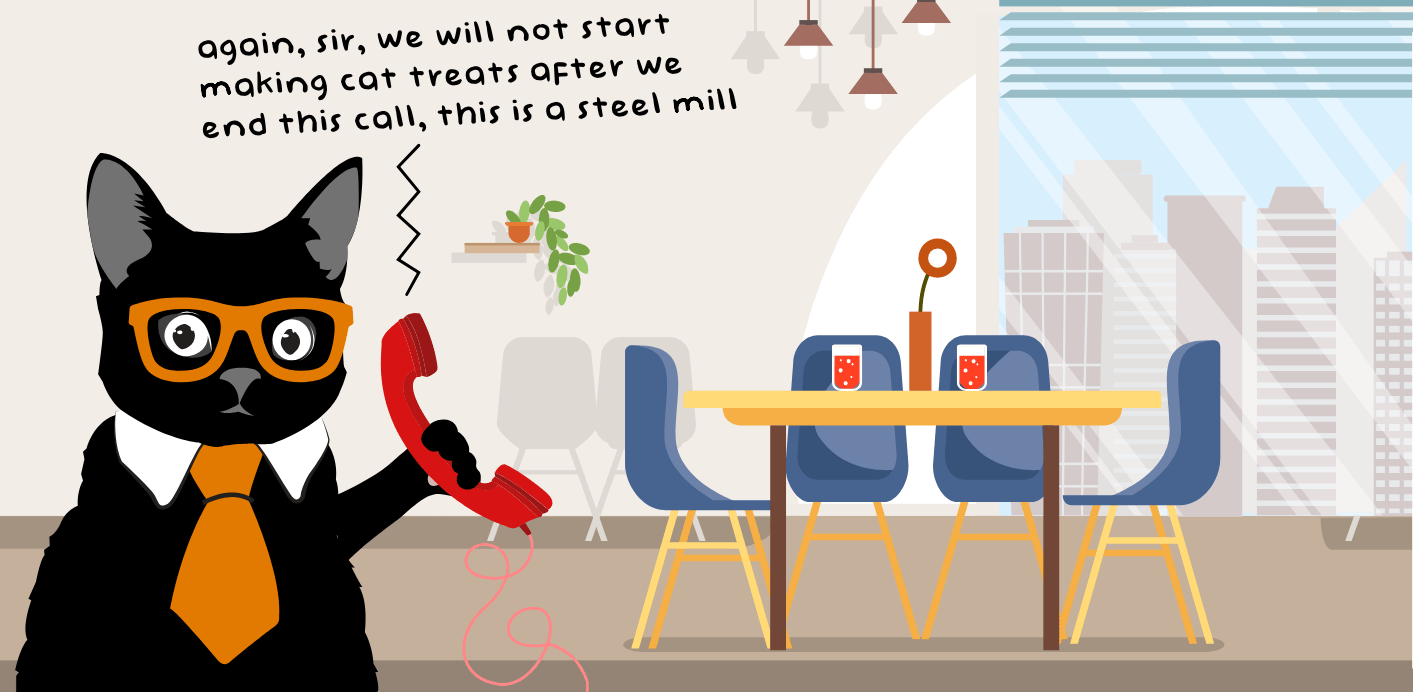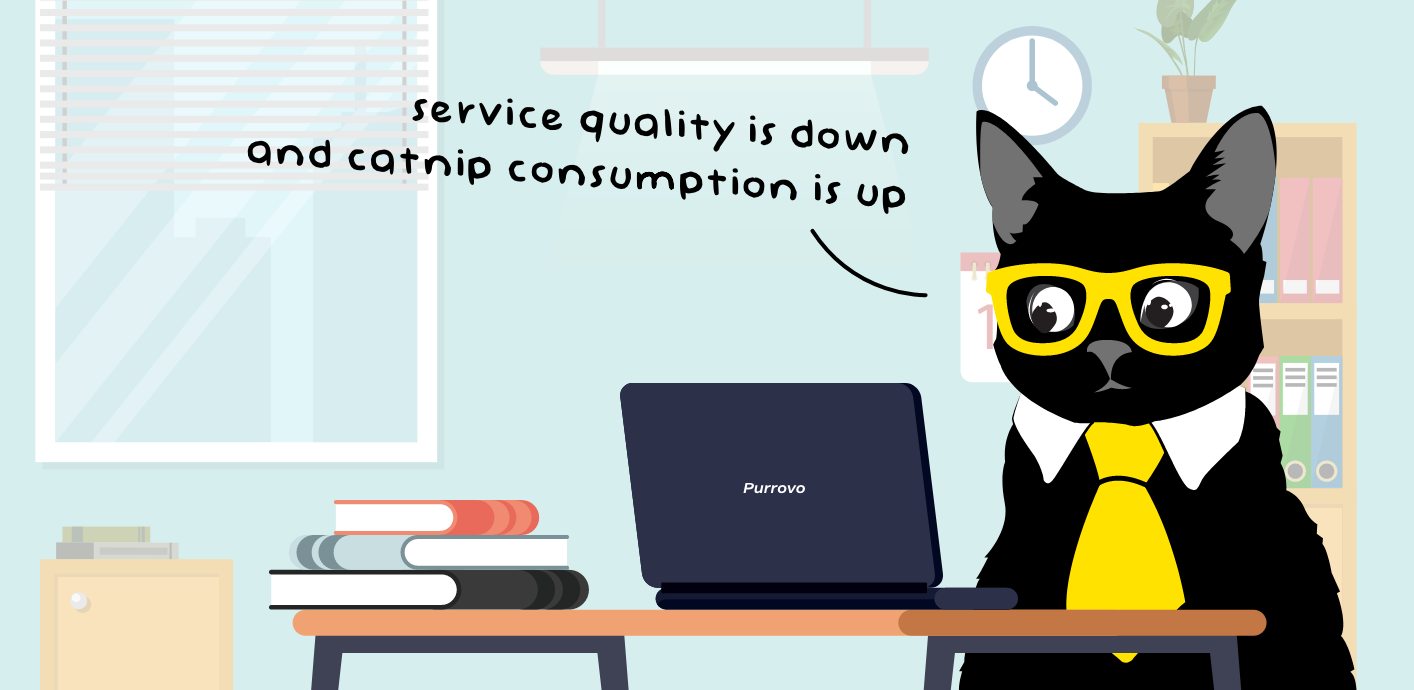Your job is to talk to the customers. And as the first point of contact, this means it is you who determines their first impression of your company.
With this great power comes great responsibility. As the voice of your company, you have to pay special attention to how you talk to customers. As the customer support representative, it’s in your wheelhouse to gently direct an unhappy customer towards a friendly way of finding a solution. In other words, you have the ultimate power to create a positive experience.
Unfurtunately, this isn’t always easy, but it’s also not impawsible to lead the tone of the conversation. But read on for some insider advice that will help you develop a tone of voice that leads to a satisfied customer.

Who are you talking to?
Knowing who your audience is will guide your tone. There are distinctions between B2B and B2C communication, and the tone of voice differs.
B2C customer service is usually more formal, and you’re likely encouraged to use templates (aka saved replies) in order to get the right information across. However, it’s important to still maintain a level of humanity in what is seemingly a robotic conversation, due to the aforementioned template. You have the (big) task of being the company’s voice, while also having to follow strict guidelines. Oh, and the person you’re talking to is totally unaware of the guidelines you’re being asked to follow. Tough job!
On the other hand, B2B customer service usually allows for more creativity. While talking to another company, you are encouraged to build a relationship with them as customers. A more casual, friendly tone is encouraged so you are more approachable.
Tone will also differ depending on the demographics of customers you’re working with. Are they native English speakers? Are they older or younger? Are you assisting them with a financial service, or buying toys for a toddler? Understanding who you’re talking to is a big driver of your tone of voice.
How are you talking to them?
Different principles are followed based on the channel through which your customers reach you.
Through a voice call, feedback is instantaneous – which also applies tonally. You can clearly hear and recognize your customer’s tone of voice and adjust how you converse with them.
Email or chat are a little trickier. All you have is written words, no context, no face or voice to listen to. So you have to play a tentative guessing game to judge the general mood of their message – and try to match it.

Tip: This is where your job is to play the mind detective. The trick is to pay attention to keywords, and you can be surprised how much you can piece together about the person behind the screen.
Can you put in more purrsonality?
Klaus is specific in this matter since our customers are also in the customer service world, so I’m a support specialist for fellow support people.
Although the principle remains that I match their tone, it provides a lot of ground for me to be more relaxed and informal. I feel like all these years online (who remembers the golden ages of Tumblr?!) using GIFS and emojis are finally paying off. They help me to create a trusting but chill mood for the conversation. After all, who doesn’t love the odd cat gif or The Office reference?

Are you a bot or a human?
The customer service industry has undergone some notable changes in the last few years. There has been a definite shift in communication. Due to our pandemic world, people seek real human interaction instead of just interacting with a bot.
YES – bots can be super helpful in gathering information needed for support when you need to ask the same initial questions over and over again. But no bot will ever be able to replace or replicate empathy.
Or even make typos, as a human agent does! Many times, a small typo or an accidental emoji has sparked shared laughter with a customer. We all know laughter is the best medicine for, well, most problems.
Klaus’ customers know exactly how the support world works, and they know they can find a lot of answers in our Knowledge Base, but they still like reaching out to us for a quick chat. As a customer specialist, the brief, friendly exchanges can sometimes make your entire day – at least for me!
How can you measure tone of voice?
This is the big question.
Tone can be learned, and that’s why measuring the quality of your communication with Klaus can help you bring your customer service game to the A-level.

How? By including it as a rating category for your customer service QA reviews. Empathy and tone is one of Klaus’ three default rating categories.
Although you can add custom rating categories and delete any if you wish, Tone remains one of the most popular among our users. By focusing on the level of humanity or empathy in the conversation and not just the standard guidelines (such as product knowledge or GDPR), your Internal Quality Score will give you an overview of how your agents communicate.
You will also be able to identify if someone is struggling with finding the appropriate phrases of politeness and kindness – I know I did at the beginning of my support career!
Feedback from my manager and peers helped me understand that my replies sounded very bot-like and very cold. A couple of coaching sessions where I studied examples from my colleagues helped me to learn how to effectively use my words. Now I can assure the customer I’m here to help and that I am in fact not a bot (yes, I got asked that question a couple of times)!
Klaus’s Coaching Sessions feature can help all support teams align on how the communication should sound to best represent your company’s voice.
A little more conversation
No matter the company or customer, what is truly important is being customer-centric. Listening to the customer and making it a back and forth “conversation” with internal teams allows you to truly understand your customers.
That’s how you build a great experience for your customers. Being relatable and human makes a company more approachable for customers.


